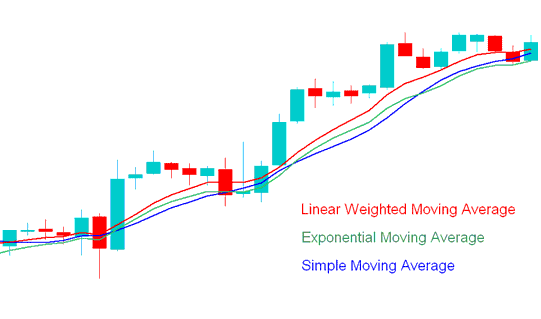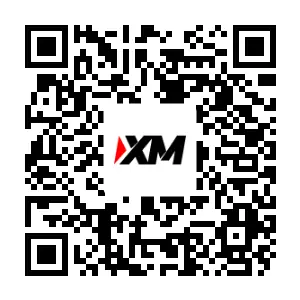Types of Moving Averages
There are four varieties of trading moving averages.
- Simple indices trading Moving Average
- Exponential indices trading Moving Average
- Smoothed indices trading Moving Average
- Linear weighted indices trading Moving Average
The weight given to the most recent price information is what separates these four moving averages.
Simple Moving Average
Index SMA technical indicator applies equal weight to the trading data used to calculate the simple moving average and is calculated by summing/adding up the price periods of a chart and this value is then divided by the number of such stock price periods. For illustration trading simple moving average 10, adds the price data for the last 10 stock price periods and divides them by 10.
Exponential Moving Average
The Index EMA indicator prioritizes more recent price information in its calculation, assigning greater significance to the latest price values through a percentage P multiplier used to emphasize the most current data points.
Linear Weighted Moving Average
The Index LWMA indicator, a variant of moving averages, assigns greater significance to the most recent price observations, valuing the latest data more highly than preceding prices. The calculation for the Linear Weighted Index Moving Average involves multiplying each closing price within the series by a specific assigned weight coefficient.
Smoothed Moving Average
The Index SMMA indicator works by using a smoothing factor of N. This factor smooths prices over N periods for stock data.
The chart example below shows SMA, EMA, and LWMA. The SMMA moving average is not used as much, so it is not shown below.
The LWMA (Linear Weighted Moving Average) indicator reacts most swiftly to recent pricing information, followed by the EMA (Exponential), and lastly the SMA (Simple).

SMA, LWMA, EMA - Types of MAs - SMA, EMA and LWMA
Intraday Trading with Exponential & Simple Moving Averages
The Simple Moving Average (SMA) and Exponential Moving Average (EMA) are the moving average types most frequently used when trading indices. Although the EMA employs a more complex calculation formula, it enjoys greater popularity than the SMA moving average for trading purposes.
A Simple Moving Average is the average of closing prices over a certain time, based on the chosen timeframe. Each timeframe's price is added up and then divided by the number of time periods chosen. If you use 10 periods, add the prices for the last ten periods and divide by 10.
The SMA stock tool uses a plain average calculation. It's basic, and traders often tie it to trends since it mirrors price moves well.
EMA on the other hand uses an acceleration factor & it's more responsive to the price trend.
Simple moving averages on stock charts show price trends. If prices stay above the SMA for three or four periods, close long positions fast. This hints the uptrend is fading.
The shorter the Simple Moving Average (SMA) period, the quicker it reacts to price changes. The SMA indicator provides direct information about market trends and momentum by analyzing its slope: a steeper SMA slope indicates a stronger trend.
Many traders also use the Exponential Moving Average in the same way, but it reacts more quickly to market changes, making it a favorite for some.
The SMA and EMA can also help you find good times to buy and sell when trading indices. These MAs can also be used with Fib and ADX trading tools to confirm the signals they give.
Get More Tutorials and Courses at:
- How to Place S&P ASX on MT5 Android App
- Introduction to Index MetaTrader 4 Tutorial Course
- Using Stochastic Indicator in Index Strategy
- How Do I Trade DJI 30 in MT5 Software Platform?
- Study How to Trade NKY225 Index Tutorial Lesson
- Where Do You Get NIKKEI in MT5 Software Platform?
- How do you use stock index indicator signals when trading indices?
- Momentum Index Trade Indicator Analysis
- What's UKX100 Spreads? UKX100 Bid Ask Spread
- How to Analyze MT4 Stock Index Indicator Kase Peak Oscillator

